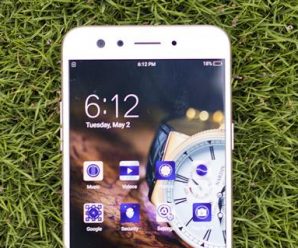An Overview of the OPPO F3: Since its launch in 2015, the brand has expanded significantly, and it is currently dominating the Pakistani smartphone industry. When the company released the F1 smartphone in 2016, it escalated the trend of taking selfies. OPPO succeeded in raising the bar for the mid-range smartphone market with its superb build quality, design, and front selfie camera.
Not much has changed this year; in March, OPPO released the F3 Plus, the company’s first smartphone with two front-facing selfie cameras. Now, the company has released the new OPPO F3, the newest model in its Selfie Expert series, which also has two front-facing cameras. With its fingerprint sensor, 4GB RAM, 64GB ROM, and 16MP + 8MP front-facing dual camera configuration, the new selfie specialist is reportedly able to take some incredible wide-angle 120-degree selfies. Just in case you’d rather watch a video than read a written piece and don’t feel like reading the long reviews.
Specs Sheet of OPPO F3:
| OPPO F3 | |
|---|---|
| Display | 5.5-inch In-Cell IPS TFT LCD capacitive touchscreen 1080 x 1920 pixels, 401 PPI |
| Processor | 1.5 GHz Octa Core, MediaTek MT6750T |
| GPU | Mali T860 MP2 |
| RAM | 4GB |
| Storage | 64GB |
| MicroSD | Yes, it Supports up to 256GB (uses SIM 2 slot) |
| Camera | 13 MP, Dual PDAF, f/2.2, autofocus, LED flash 16 MP + 8 MP ultra-wide angle |
| Software | Android V6.0 (Marshmallow) |
| Battery | (Non-removable) 3200 mAh Battery |
| Dimensions | 153.3 x 75.24 x 7.3 mm 153g |
F3 design: The Oppo F3 has the same appearance as the iPhone 6 and iPhone 6s and has a standard Oppo design, similar to the Oppo F1s from the previous year. The device is made of a single, solid piece of metal with rounded corners and thin antenna lines on top and bottom of the back surface. It can be a little irritating to place your phone on flat, hard surfaces because of the slightly curved back, especially around the corners, and the little protrusion of the rear camera. Undoubtedly, the Handset is sleek, sophisticated, and high-end, but it still lacks the inventive and distinctive design that OPPO previously achieved with its N or Find series.
The front side of the screen has minimalist black borders around the edges, which are covered with 2.5D glass, giving the impression that the screen is bursting at the edges. It shares a fingerprint sensor with the OPPO F1s and has a capacitive touch home button located directly below the screen.
The capacitive back and multitasking keys surround the one-touch fingerprint sensor. You only need to touch the scanner to gain access; unlike F1s, you don’t need to press it. It unlocks the phone in less than a second, demonstrating how quick the scanning speed is.
The volume keys are on the left, and the power button and SIM tray are on the right.
Two regular Nano SIM cards and a shared memory card can also be used in the device’s Three-in-one SIM tray. Regretfully, Oppo’s handset lacks a USB Type-C port, in contrast to several other recently announced competitors, like the Samsung Galaxy A5 2017.
The Oppo F3’s design is striking from the front in general, and the optimized double-edged bezel on the sides gives the impression that the phone is even thinner. Despite the appearance of thin antenna bands, the rear lacks creativity and retains an iPhone-like feel.
The display of the Oppo F3 is a 5.5-inch IPS LCD screen with Gorilla Glass 5 protection, offering a full HD resolution of 1920 x 1080 pixels. At 401 ppi, the F3’s pixel density is likewise good. The display offers acceptable viewing angles, sufficient brightness levels, and some very clear and sharp colors.
The F3 screen is brighter than many recently released smartphones, with a maximum brightness of 500 nits. Although it’s a crucial element that ought to have improved the screen’s outdoor appearance, the F3’s display isn’t bright enough to withstand intense sunshine. Blacks and contrast are both very deep. Certain hues, including red and blue, appear to have purposefully deviated from the norm to improve the overall color scheme and give the colors a more pleasing appearance. The “eye protect mode” on the F3 protects your eyesight and maintains your regular sleep schedule by filtering blue light from the screen.
Performance: The OPPO F3 is outfitted with a Mali T860-MP2 GPU, an integrated 1.5 GHz Octa-core MediaTek processor, 4GB of RAM, and 64GB of internal memory. With the use of a micro SD card, the memory may be increased even further to an astounding 256GB.

